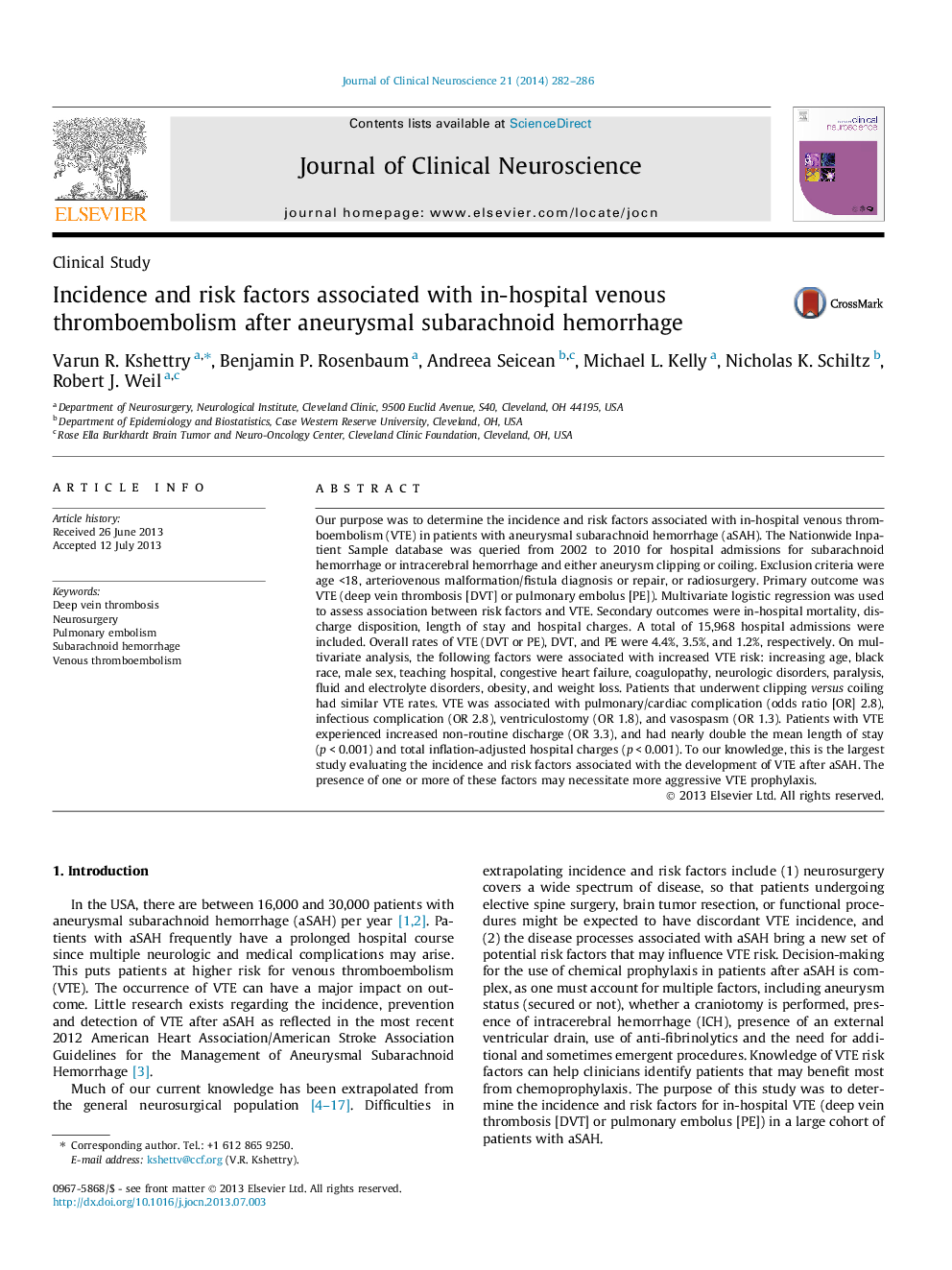| کد مقاله | کد نشریه | سال انتشار | مقاله انگلیسی | نسخه تمام متن |
|---|---|---|---|---|
| 3059237 | 1187422 | 2014 | 5 صفحه PDF | دانلود رایگان |
Our purpose was to determine the incidence and risk factors associated with in-hospital venous thromboembolism (VTE) in patients with aneurysmal subarachnoid hemorrhage (aSAH). The Nationwide Inpatient Sample database was queried from 2002 to 2010 for hospital admissions for subarachnoid hemorrhage or intracerebral hemorrhage and either aneurysm clipping or coiling. Exclusion criteria were age <18, arteriovenous malformation/fistula diagnosis or repair, or radiosurgery. Primary outcome was VTE (deep vein thrombosis [DVT] or pulmonary embolus [PE]). Multivariate logistic regression was used to assess association between risk factors and VTE. Secondary outcomes were in-hospital mortality, discharge disposition, length of stay and hospital charges. A total of 15,968 hospital admissions were included. Overall rates of VTE (DVT or PE), DVT, and PE were 4.4%, 3.5%, and 1.2%, respectively. On multivariate analysis, the following factors were associated with increased VTE risk: increasing age, black race, male sex, teaching hospital, congestive heart failure, coagulopathy, neurologic disorders, paralysis, fluid and electrolyte disorders, obesity, and weight loss. Patients that underwent clipping versus coiling had similar VTE rates. VTE was associated with pulmonary/cardiac complication (odds ratio [OR] 2.8), infectious complication (OR 2.8), ventriculostomy (OR 1.8), and vasospasm (OR 1.3). Patients with VTE experienced increased non-routine discharge (OR 3.3), and had nearly double the mean length of stay (p < 0.001) and total inflation-adjusted hospital charges (p < 0.001). To our knowledge, this is the largest study evaluating the incidence and risk factors associated with the development of VTE after aSAH. The presence of one or more of these factors may necessitate more aggressive VTE prophylaxis.
Journal: Journal of Clinical Neuroscience - Volume 21, Issue 2, February 2014, Pages 282–286
